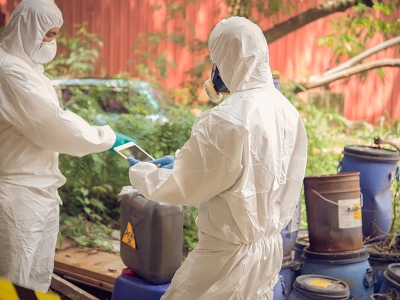Humans are exposed to radiation in a variety of ways every day, whether from a trip to the beach, radon from their basement, a flight across the country, or a trip to the dentist for an annual x-ray. For the average person, these doses are very low and decades of research have shown they pose no health risk. Even those with higher average doses, such as pilots and individuals working with radioactive materials, there are minimal clinical impacts and numerous methods for identifying when a higher dose exposure has occurred and mitigating its impact, either at exposure or following.
However, clinical impact does not mean molecular changes have not occurred. In recent years, research has shown different forms and doses of radiation, including low dose exposures, can result in sub-cellular, cellular, and multicellular changes which are not linked to any physiological or clinical impact. The ability to identify exposure events, especially lower dose exposures to ionizing radiation, is of critical interest to the Intelligence Community (IC), military, and other U.S. government (USG) elements, in part to assure the long-term safety of individuals with the potential for above background exposures.
This is exactly the goal of the Intelligence Advanced Research Projects Activity's (IARPA) Targeted Evaluation of Ionizing Radiation Exposure (TEI-REX) program. Specifically, TEI–REX aims to enable the identification of low-dose ionizing radiation exposures which have already occurred, either from intentional or accidental exposure, using biodosimetry or a measurement of biological response as a surrogate for radiation dose.
Importantly, TEI-REX aims to research new models of biodosimetry using biological samples to assess the dose of exposure, the timeline of exposure, and other factors of the environment associated with the exposure event. The end-goal is to better protect IC, uniformed service, and other USG personnel while also supporting counter proliferation efforts globally.
“Current biodosimetry approaches have focused predominately on high dose exposure triage, and current efforts from other entities have made remarkable progress at rapid identification of higher dose, clinically relevant, exposure events,” said TEI-REX Program Manager, Dr. Michael Patterson. “However, these approaches are limited to more invasive, often multiple, sample collection and often have limited accuracy for only a few days after an event.”
Conversely, TEI-REX is looking towards evaluation of much lower dose events from samples much easier to collect, store, and ship, which are valid for months after an event has occurred. TEI-REX intends to fill a gap in current biodosimetry capabilities and is expected to impact numerous fields.
Real-world examples of low-dose ionizing radiation poisoning reinforce the need for the technology TEI-REX aims to develop, Dr. Patterson explained.
For instance, Russian defector Alexander Litvinenko was poisoned in 2006 via ingestion of polonium-210, but investigators took 22 days to confirm the poisoning. Attempts to identify radionuclide poisoning using a Geiger counter at Mr. Litvinenko’s hospital bed failed and results from urine analysis using a gamma spectrometer were nearly overlooked. Biodosimetry capabilities enabling external analysis of Mr. Litvinenko could have assisted in this investigation.
For the military, a lack of biodosimetry devices in environments with low-dose radiation exposure has the potential to reduce mission capability. Forward operators often work in environments where it is unknown if radioactive materials are present. Moreover, because forward operating bases lack access to the necessary expertise and equipment, they can’t effectively evaluate personnel for exposures even if such an exposure possibly occurred. The approaches being pursued under TEI-REX could help ensure mission readiness for the warfighter without undue burden on existing missions.
Expected to take 3.5 years, TEI-REX will seek to make biodosimetry signatures detectable within 25 days, or more than 90 days after radiation exposure. The program will initially focus on robust biomarkers associated with higher dose exposures while driving research towards lower-dose detection.
The organizations (performers) selected to carry-out the research and development necessary to potentially make TEI-REX a reality are a who’s-who in the field of biodosimetry, including the University of Washington, Ohio State University, Signature Science LLC, and Areté LLC.
Lawrence Berkeley National Laboratory, Los Alamos National Laboratory, and Armed Forces Radiobiology Research Institute (AFRRI) will be the program’s testing and evaluation partners.
“The problem TEI-REX aims to solve is challenging, but with the highly experienced and expert performers we’ve selected to partner with us, I’m confident TEI-REX will be able to meet its goals and help the IC, military, and USG more adroitly prepare for and address radiological events,” Dr. Patterson said.

